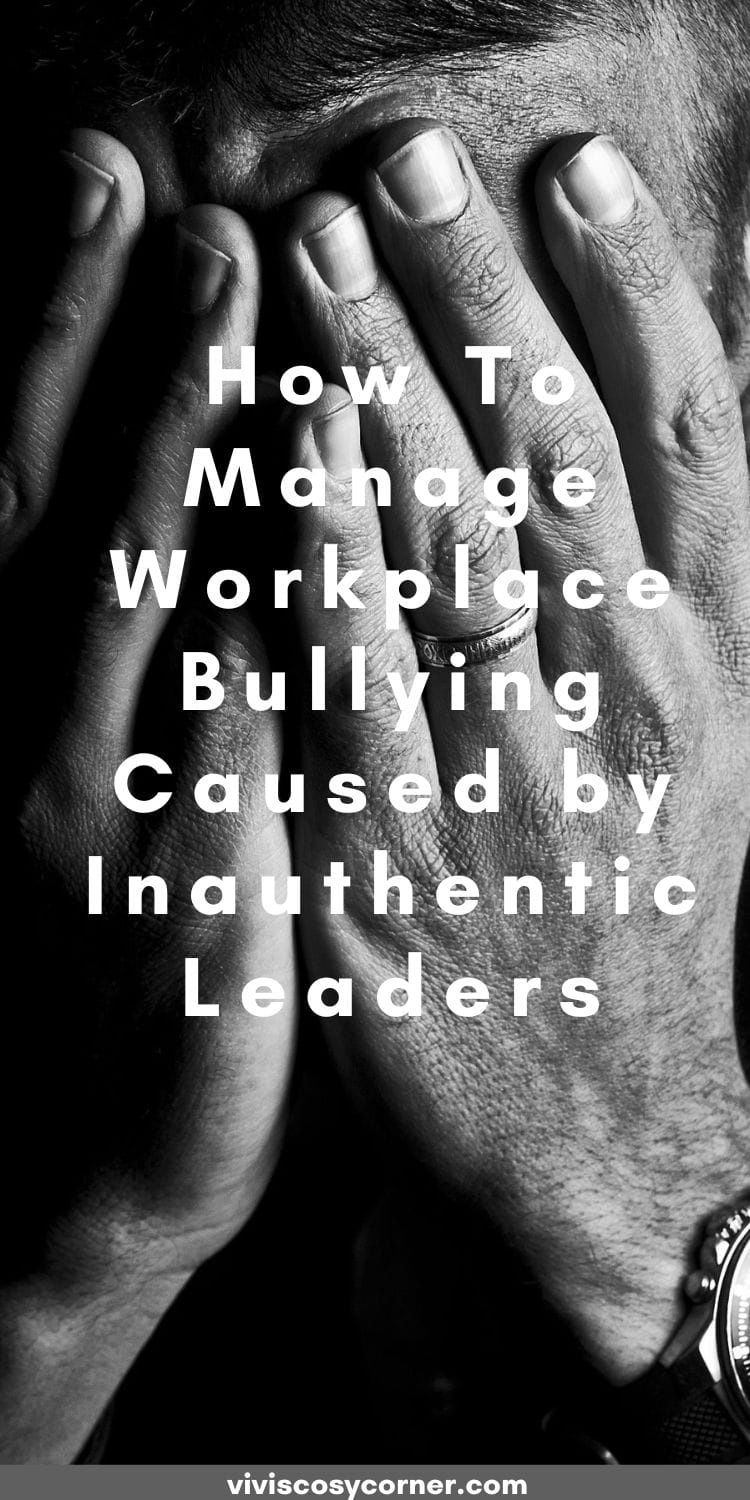Workplace bullying is a silent epidemic, insidious in its nature, creeping through the cracks of professionalism without a clear mask. It thrives under the guise of inauthentic leadership, where subtle tendencies, like backhanded compliments, exclusion from key conversations, or the constant undermining of one’s contributions, are allowed to fester. These behaviours may seem small in isolation, but over time, they erode confidence, morale, and even one’s sense of self-worth. I know this because I lived it.
Early in my career, I joined a team that seemed promising. The work was challenging, the projects were exciting, and I was eager to prove myself. But it didn’t take long for me to notice the subtle undercurrents of toxicity. My manager presented themselves as a supportive and approachable leader, yet they had a way of making me feel small without ever raising their voice. They would praise my work in private, only to dismiss my ideas in team meetings with a condescending, “That’s great, but let’s focus on the bigger picture.” At first, I told myself it was just their way of pushing me to think bigger. But over time, the pattern became impossible to ignore.

I remember one particular instance that still sticks with me. I had spent weeks preparing a detailed proposal for a new project, pouring my heart into every slide. When I presented it to the team, my manager listened quietly, nodding along. But as soon as I finished, they leaned back in their chair, smirked, and said, “Great effort, but it’s not really what we’re looking for.” No constructive feedback, no acknowledgment of the hours I’d invested, just a casual dismissal that left me feeling invisible. Later, I found out they had shared my ideas with another team member, who presented them as their own in a leadership meeting. When I confronted my manager, they brushed it off, saying, “We’re all on the same team, it doesn’t matter who gets the credit.”
That moment was a turning point for me. I realized that this wasn’t about my work or my abilities; it was about power and control. My manager’s inauthentic leadership style, masked by a veneer of professionalism, was enabling a culture of subtle bullying. They thrived on keeping people off-balance, fostering an environment where self-doubt flourished. I started noticing how others on the team were treated similarly: the quiet exclusion from important emails, the passive-aggressive comments disguised as jokes, the constant shifting of goalposts to ensure no one ever felt secure.
The toll it took on me was profound. I began second-guessing every decision, every email, every word I spoke in meetings. The confidence I once had in my abilities started to crumble, and I found myself dreading work every day. It wasn’t until I confided in a trusted mentor outside the organization that I realized what was happening. They helped me see that I wasn’t the problem: this was a systemic issue, a failure of leadership that allowed bullying to thrive under the radar.
Eventually, I made the difficult decision to leave that team. It wasn’t easy, but it was necessary for my mental health and professional growth. Looking back, that experience taught me a valuable lesson: workplace bullying doesn’t always come with a loud voice or a red flag. Often, it’s the quiet, insidious behaviors – the ones that leave no paper trail – that do the most damage. And it’s up to us to recognize it, call it out, and demand better.
In today’s workplace, leadership isn’t just a title: it’s about building trust, integrity, and respect. Authentic leadership stems from self-awareness and the ability to empower others, not control them. It’s about creating spaces where everyone feels valued and inspired to thrive. Anything less is a mask hiding something far more damaging.
If you’ve ever felt confused, undervalued, or manipulated by a leader who pretends to support you but acts otherwise, you’re not alone. The toll on your self-esteem and well-being can be profound. Let’s uncover the signs of inauthentic leadership, understand its roots, and equip you with strategies to navigate these challenges with resilience and professionalism. You deserve better, and you have the power to rise above it.

Signs of Inauthentic Leadership: When The Mask Doesn’t Fit
Imagine working for someone who greets you with a warm smile, praises your work in front of others, and makes you feel like you’re part of something special. But behind closed doors, their words cut like a knife, their actions leave you doubting yourself, and their behavior feels like a betrayal. This is the hallmark of inauthentic leadership, It is a mask of friendliness hiding a world of subtle manipulation and toxicity.
Inauthentic leaders are like mirages in the desert: they promise clarity and support, but when you reach out, there’s nothing solid to hold onto. Their behavior doesn’t just hurt individuals; it poisons the entire team, creating a culture of distrust, anxiety, and disengagement. Spotting these leaders can be tricky because their tactics are often cloaked in charm and plausible deniability. But once you know the signs, you can see through the facade.
Here are the red flags to watch out for:
Friendly Face, Harsh Actions
They’re your biggest cheerleader in public, applauding your efforts and singing your praises. But behind the scenes, they criticize your work, sabotage your progress, or take credit for your ideas. It’s like receiving a beautifully wrapped gift, only to find it empty inside.
Favouritism and Division
They play favourites, creating an “in-crowd” and an “out-crowd.” This isn’t just about preference, it’s a calculated move to pit team members against each other, fostering division and competition where collaboration should thrive. It’s leadership by chaos, not cohesion.
Passive-Aggressive Feedback
Instead of offering constructive criticism, they lace their feedback with sarcasm, backhanded compliments, or veiled insults. “Great job… for someone with your level of experience,” they might say, leaving you wondering if you’ve just been praised or subtly undermined.
Undermining Confidence
They micromanage your every move, dismiss your ideas without consideration, or overload you with tasks while pretending to value your input. It’s like being handed the reins of a horse, only to have them yanked away the moment you try to steer.
Feigning Transparency
They withhold critical information, claiming it’s for your own good or that you “don’t need to worry about it.” But this secrecy isn’t about protection, it’s about control. It leaves you in the dark, second-guessing your decisions and questioning your place on the team.
Indirect Pressure to Conform
They subtly pressure you to fall in line, discouraging creativity and independent thinking. It’s not an outright demand; it’s a quiet erosion of your confidence, a whispered message that your uniqueness is a liability, not an asset. Over time, this stifles innovation, weakens morale, and leaves the team disengaged and disillusioned.
If any of this feels familiar, you’re not alone. Many of us have encountered leaders who wear masks, their true intentions hidden beneath layers of charm and charisma. Their behaviour says more about them than it does about you.

Why Do Leaders Pretend?
Leadership, at its best, is a beacon of inspiration, a guiding light that helps others grow and thrive. But sometimes, leaders hide behind masks that crack under the weight of their own insecurities, fears, and unmet needs. Understanding why they pretend isn’t about excusing their behaviour; it’s about peeling back the layers to see the human beneath the title. When we do, we can depersonalize their actions, reclaim our power, and respond with clarity and grace.
So why do they pretend?
Insecurity: The Shadow of Self-Doubt
Imagine standing on a stage, the spotlight glaring, and realizing you don’t know your lines. For some leaders, this is their daily reality. Deep down, they question their abilities, their worth, their right to lead. Instead of confronting these fears, they cling to control like a life raft, using manipulation as a tool to keep others from seeing the cracks in their armour. It’s not about you. It’s about their struggle to believe in themselves.
Power Dynamics: The Illusion of Control
Picture a puppeteer, pulling strings to create the illusion of movement. Some leaders operate the same way, believing that confusion, fear, or chaos will keep everyone looking to them for answers. They think authority is something to be wielded, not earned. But true power doesn’t come from keeping others off-balance; it comes from lifting them up. Their tactics reveal more about their limitations than your worth.
Emotional Immaturity: The Mask of False Confidence
Leading isn’t just about strategy or vision; it’s about heart. It’s about the courage to be vulnerable, to admit mistakes, to connect authentically. But not all leaders are equipped for this. Emotional immaturity can leave them stranded in a world of defensiveness and ego, unable to build the trust that makes teams thrive. Their facade of confidence is often just that: a facade, papering over the gaps in their emotional intelligence.
The Illusion of Invulnerability: The Weight of Perfection
Some leaders wear their masks so tightly they forget they’re wearing them. They create a false sense of superiority, a castle of invincibility built on the shaky foundation of “I must never fail.” But perfection is a heavy burden to carry. It forces them to hide their doubts, silence their uncertainties, and project an image that’s as exhausting as it is unsustainable. In the end, this illusion doesn’t strengthen their leadership, it weakens it, isolating them from the very people they’re meant to inspire.
Leaders who pretend are often crying out for help in ways they don’t even realize. Their behaviour is a reflection of their inner world, not your value or potential. When we see this, we can step back, take a deep breath, and choose how we respond. We can refuse to let their insecurities dim our light. We can rise above the noise and lead by example, even if our title doesn’t say “leader.”

The Ripple Effects of Inauthentic Leadership
When leaders wear masks, the consequences are far-reaching: The effects of inauthentic leadership don’t just stop at one person; they ripple through the entire workplace like a stone tossed into a still pond. Tand talented employees start looking for the exit. It’s a silent storm that leaves everyone drenched in frustration and disillusionment.
Eroded Trust
Trust is the glue that holds teams together. But when leaders say one thing and do another, that glue starts to dissolve. Employees stop believing in their leaders, and sometimes, in each other.
Low Morale
Toxicity is like a slow leak in a tire. At first, you might not notice it, but over time, it leaves you deflated. Disengagement and dissatisfaction creep in, and the joy of work fades away.
High Turnover
Talented employees don’t stay where they feel undervalued or disrespected. They leave, taking their skills, creativity, and energy with them. And the ones who stay? They’re often just biding their time.

How to Navigate The Storm
Facing an inauthentic leader can feel like walking through a minefield. But with the right strategies, you can protect yourself and maintain your professionalism:
Document Everything
Keep a detailed record of interactions, decisions, and incidents where you felt undermined or bullied. Think of it as building a shield, one that will protect you if you ever need to escalate the issue.
Set Boundaries
Politely but firmly establish your limits. If the leader’s feedback is unclear, ask for clarity: “I want to ensure I meet your expectations. Could you clarify what success looks like for this project?”
Boundaries aren’t walls; they’re bridges to better communication.
Seek Allies
You’re not alone. Build relationships with trusted colleagues who may have had similar experiences. A united front can challenge toxicity and remind you that you’re not imagining things.
Stay Professional
It’s tempting to retaliate or get caught up in office politics, but don’t. Focus on your work and let your performance speak for itself. Your professionalism is your power.
Leverage Feedback Loops
Use your performance reviews or one-on-one meetings to diplomatically address concerns: “I value transparency and constructive feedback. Are there areas where I could improve that haven’t been communicated clearly?”
Feedback is a two-way street: don’t be afraid to walk it.
Escalate When Necessary
If the behaviour persists and negatively impacts your work, consider involving human resources or a trusted higher authority. Present your case calmly, supported by documented evidence. This is not about emotion, it’s about facts.
Honestly, this step can feel like walking a tightrope. Sometimes it seems as though HR exists to protect the organization or its leaders, not the employees. And if the toxic behaviour is woven into the fabric of the workplace culture, the challenge becomes even greater. You might feel like you’re standing alone against a tide.
In these moments, you’ll face a a difficult decision: one that requires you to consider your context, circumstances, and your own boundaries. It’s not easy, but it’s necessary. Because at the end of the day, your well-being and your future are worth fighting for. Trust your instincts, lean on your evidence, and remember: you have the right to a workplace where you feel respected and valued.
Prioritize Self-Care
Toxic leadership can take a toll on your mental health. Practice mindfulness, lean on your friends or mentors, and consider professional counselling if needed. You can’t pour from an empty cup.

Fostering Authentic Leadership
While you may not control who leads you, you can influence the culture around you. Here’s how:
- Model Authenticity: Lead by example in your interactions. Show empathy, honesty, and accountability. Be the leader you wish you had.
- Provide Constructive Feedback: When appropriate, share your thoughts on how leadership styles impact the team. Feedback is a gift: give it thoughtfully.
- Promote a Feedback Culture: Advocate for open channels of communication where concerns can be raised without fear of retaliation. A healthy workplace is built on dialogue, not silence.
You deserve to work in an environment where leadership is genuine, where trust is built, not broken, and where your contributions are valued, not undermined. If you’re facing inauthentic leadership, take heart. You have the strength to rise above it, to protect your confidence, and to keep moving forward. And remember, the best leaders aren’t those who wear masks, they’re the ones who inspire others to take theirs off.
Remember, your voice matters. Advocate for yourself and your colleagues. , Prioritize your mental well-being over a toxic work environment. It’s not just about surviving, it’s about thriving.
You are stronger than the storm. Keep going. Your light is too bright to be dimmed by someone else’s shadows.
Have you ever dealt with an inauthentic leader? Share your experiences in the comments below!
Let’s learn from each other’s journeys and build workplaces where integrity and authenticity are the norm.
Thank you for being a VCC reader.

